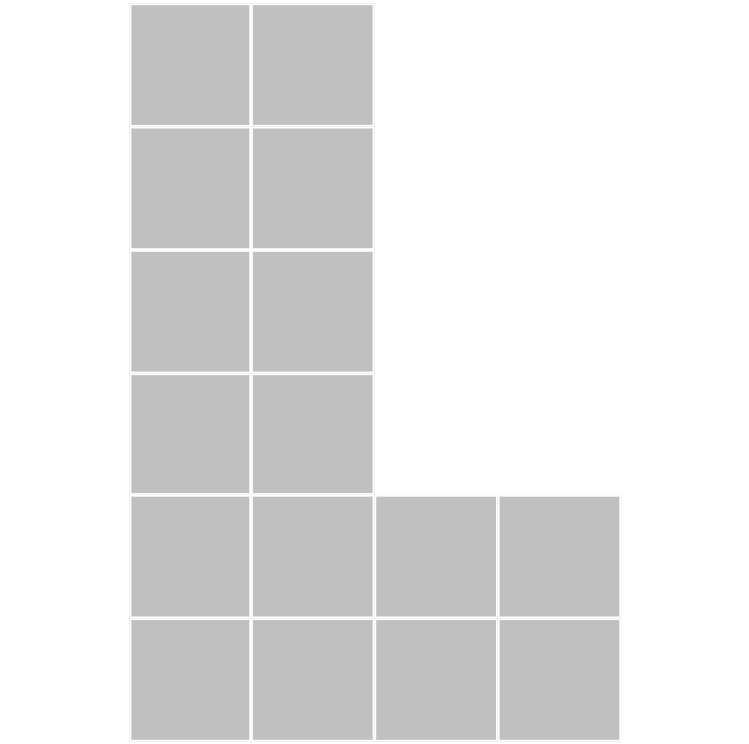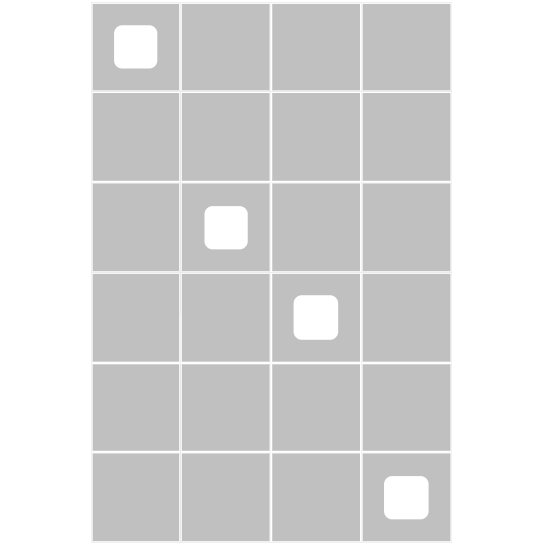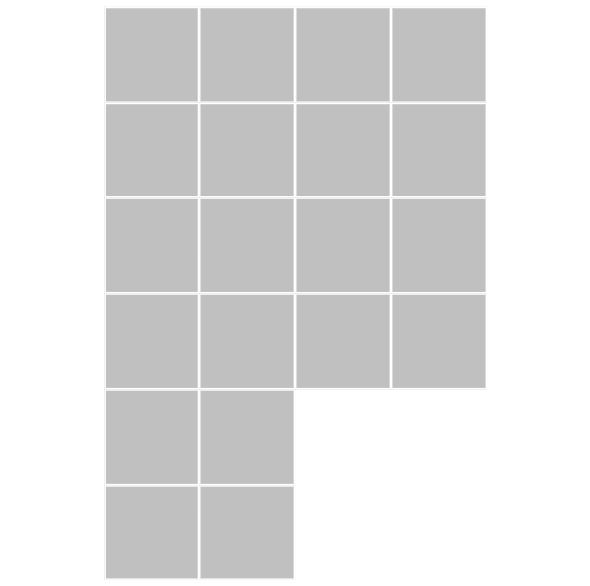Today's PUZZLE CLASSIC OF THE DAY
PREVIOUS 12 DAYS
Average Speed
A horse travels half his route, with no load, at 12 miles per hour. The rest of the way a load slows the horse to 4 miles per hour. What is the horse's average speed?
L-Board into 4 Scaled Parts

Cut this L-shaped board into 4 congruent parts (identical in area and shape, though they can be mirrored), which all are scaled versions of the board (similar).
A Watch Face
Divide the watch face with 2 straight lines into 3 parts so that the sums of the numbers in each part are equal. Draw by moving between red notches on the inner circumference.
9 Digits to 99,999

Place digits 1 through 9 into the equation so that to get the sum of 99,999.
Greek Cross
Draw a Greek cross (a cross with 4 arms of equal length), moving from dot to dot so that exactly 5 dots are enclosed inside the cross and 8 dots are outside of it.
A Broken Clock Face
While in a museum, an old clock with Roman numerals got cracks on its face, dividing it into 4 parts with unequal totals in each - 17, 20, 20, and 21. If one crack would split one of the Roman numerals it would allow to reach 4 parts with the sum of 20 in each. Can you replicate that number and how the crack should split it?
A Fuse Board into 4 Panels

A half-ready 4x6 fuse board has 4 square apertures in it. Cut it into 4 identical panels, each with one aperture, so that a panel's length is no bigger than the fuse board's width.
P-Board into 4 Scaled Parts

Cut this P-shaped board into 4 congruent parts (identical in area and shape, though they can be mirrored), which all are scaled versions of the board (similar).
A Cube Through Cube
It is possible to cut a hole in one cube to enable another identically-sized cube to pass through it. What would be a shape of the minimal cross-section of such a hole?
17 Dots: Counting Squares
How many different squares are indicated by 4 dots marking their corners?
9 Dots: How Many Squares?
How many different squares indicated by four spots can be spotted here?
Digits' Product or Sum
What is bigger: the all digits' product or the all digits' sum?
